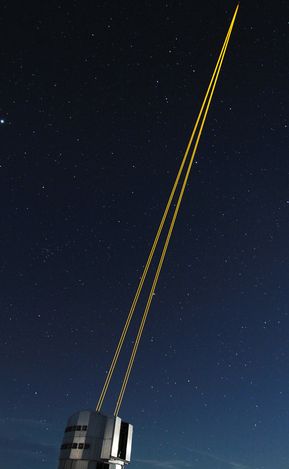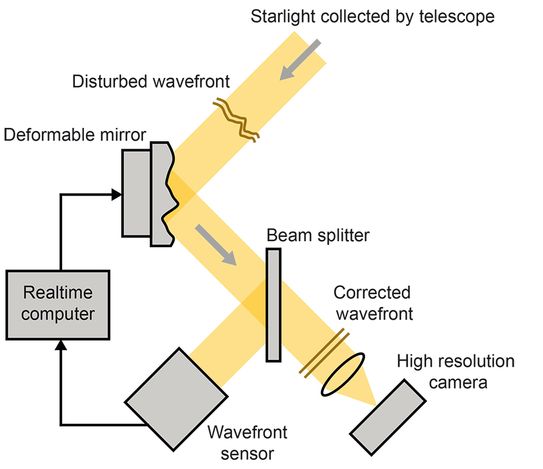How our SodiumStar lasers help to discover the universe
Studying the universe using ground-based telescopes face one problem: Local variations of the atmosphere's refractive index lead to rapid wavefront distortions ("twinkling") of the light propagating from the stars towards the telescope. This effect leads to image blurring comparable to the flickering above a hot tarmac road, limiting the achievable resolution ("seeing") of an earthbound telescope.
This effect can be corrected using adaptive optics (AO) systems built into the telescope. Such a system employs a wavefront sensor to measure the atmosphere’s distortions to the light of a bright (natural) guide star and subsequently compensates the induced error in near real-time (kHz rates) with a deformable mirror. This removes most of the image-blurring effect of the atmosphere and significantly improves the telescope's resolution. However, natural guide stars that are bright enough for an AO system cannot be found in every part of the sky, especially not with the small fields of view of modern telescopes. Therefore, AO systems need to create their own "artificial" stars to enable a reliable operation in every part of the sky.
This is where TOPTICA comes into play. Our SodiumStar is a laser system that creates an artificial star by exciting sodium atoms in a layer about 90 km above the earth. It provides the required narrow-band high-power laser light at the exact sodium resonance frequency near 589 nm (D2a line) to generate enough photon return for an AO system.
The SodiumStar is an off-the-shelf product that supports easy integration and maintenance-free operation. All optical components are integrated into a robust system with a maximum of user convenience and reliability for telescope operators. It offers a high flexibility combined with minimal infrastructural demands, which is beneficial in particular for small, agile, and remotely operated telescopes.
In early 2016, four SodiumStar lasers were installed at one of ESO’s VLT telescopes in order to implement advanced tomographic modes of AO. With this setup, near-diffraction-limited images of the complete field of view of the telescope should be achievable.


